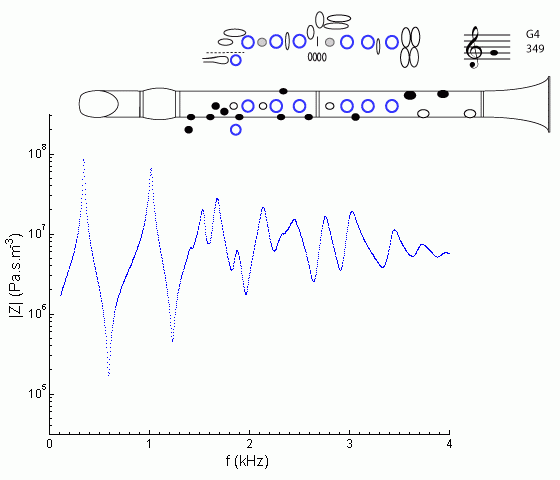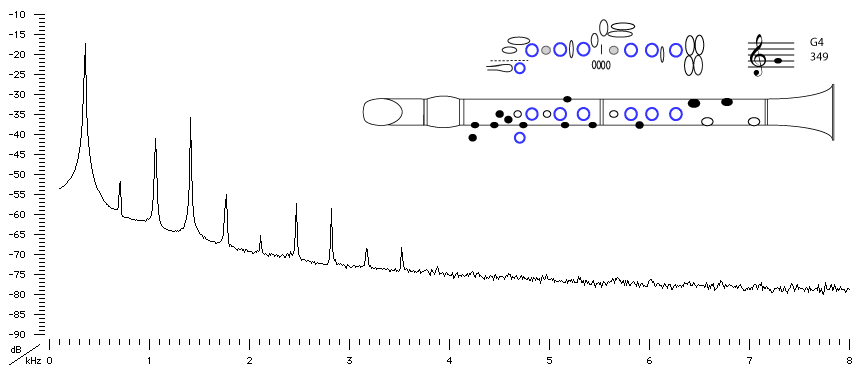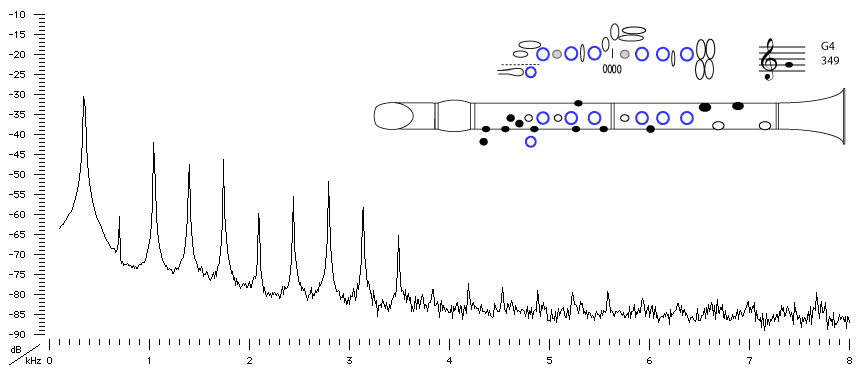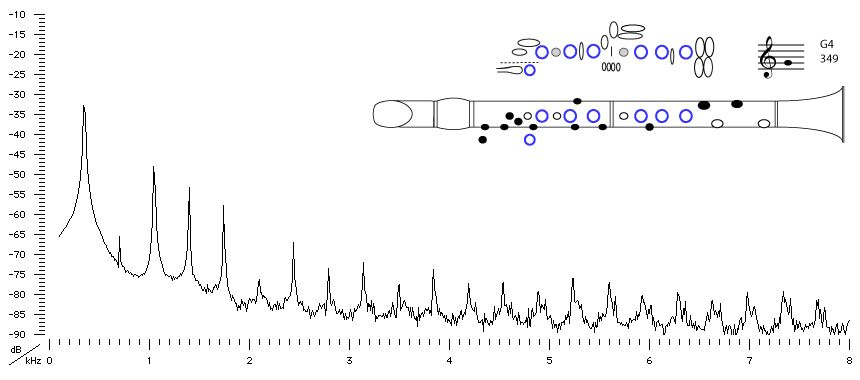| Acoustics of the clarinet |
Bb clarinet |
G4 |

|
Fingering Acoustic schematic Non-specialist introduction
to acoustic impedance Notes are the written pitch. |
Observe that, unlike the curves for the notes below D#4, these curves have only two strong harmonic peaks. The sound still has several strong odd harmonics (particularly when played forte, as here), but apart from the first two they are not much assisted by resonances of the bore. For this reason, we could say that the throat register begins here: having only two harmonic resonances, fingerings in this register are more easily 'bent' (their pitch is more readily changed) by embouchure and vocal tract effects.
In the sound spectra below, note that the first couple of odd harmonics are stronger than the even harmonics. The reed can produce both odd and even harmonics, but in the clarinet only the odd harmonics are supported by (line up with) the peaks in the impedance spectrum (above). At high frequencies, the sound harmonics don't often coincide with peaks of impedance, so the difference between odd and even harmonics disappears.
In the throat register, we no longer see the weak second and fourth harmonics of the chalumeau register and so the timbre is noticeably different.
For general comments about the throat register, see E4

Sound spectrum
of a Bb clarinet
played using fingering for G4
forte .
For more explanation, see
Introduction to clarinet acoustics
For this note (and also for E3, F3 and A6), we show spectra for different loudness or dynamic levels (f, mp and pp). Note that, as the player blows harder, the level of the fundamental varies only a little: more important is that more high harmonics appear and that the harmonics already present become stronger. These extra and stronger harmonics change the timbre of the sound, making it brighter or less mellow: listen to the sound files. They are also very effective at making it louder, because our ears are most sensitive in the range 1-4 kHz. (See What is a decibel?) Note also that the base line for all spectra is a broad band 'noise' containing all frequencies. This is due to the turbulence of air passing through the reed opening, and it is an important part of the characteristic clarinet sound, particularly at the beginning of a note.
For a discussion of how the reed motion produces different timbre and dynamic levels, see Playing softly and loudly.

Sound spectrum
of a Bb clarinet played using fingering for G4 mezzopiano.
![]()
![]() You can hear G4 mezzopiano played on a Bb clarinet.
You can hear G4 mezzopiano played on a Bb clarinet.

Sound spectrum
of a Bb clarinet played using fingering for G4 pianissimo.
![]()
![]() You can hear G4 pianissimo played on a Bb clarinet.
You can hear G4 pianissimo played on a Bb clarinet.
|
Contact:
Joe Wolfe
/ J.Wolfe@unsw.edu.au |